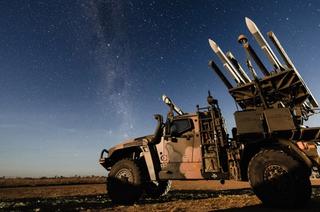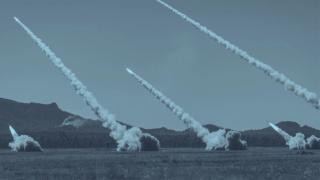Executive summary
- The United States’ National Technology and Industrial Base (NTIB) is a congressionally mandated policy framework intended to foster integration and collaboration between defence companies and authorities based in the United States, Canada, Australia, the United Kingdom and New Zealand.
- The NTIB remains among the most readily available yet underutilised instruments for alliance-based industrial integration for US policymakers. This stems from a combination of cumbersome and outdated regulatory measures, government-unique acquisition processes, protectionist instincts in both major political parties, bureaucratic inertia and a growing distrust of multilateralism.
- The expanded NTIB was intended to serve three related purposes: to better equip the United States with the industrial capacity and sources of technological innovation required to compete with China; to address long-standing barriers to such cooperation with allies and partners; and as a legislative means to insulate alliance integration imperatives from domestic protectionist instincts.
- Despite being amended in 2017 and 2023 to encompass all Five Eyes nations, the NTIB has seemingly been ignored in favour of bilateral projects or other multilateral arrangements such as AUKUS, even though many of these partnerships face the same challenges as those that the expanded NTIB was intended to address. Successive administrations have also struggled to reconcile the NTIB’s integration objectives with political pressures to prioritise domestic products and parallel struggles to reform outdated defence acquisition processes.
- These challenges are readily observable in the second Trump administration. Though willing to pursue politically difficult regulatory and cultural reform, the administration has yet to articulate a role for allies in its defence industrial strategy beyond buying US weaponry, while tariffs and other protectionist measures threaten to further complicate key defence cooperation initiatives like AUKUS and the NTIB.
Though willing to pursue politically difficult regulatory and cultural reform, the second Trump administration has yet to articulate a role for allies in its defence industrial strategy beyond buying US weaponry, while tariffs and other protectionist measures threaten to further complicate key defence cooperation initiatives like AUKUS and the NTIB.
Recommendations
To revive the NTIB as a viable mechanism for alliance industrial integration, NTIB member countries should:
- Establish an NTIB senior officials’ governing body to address industrial base harmonisation issues, ideally with minister-level buy-in.
- Further reform technology transfer and acquisition laws, regulations, policies and practices, with a focus on commercial technologies.
- Limit protectionist process barriers to cooperation by preserving agreements that protect against it, such as Reciprocal Defence Procurement Agreements (RDPAs).
- Sequence the NTIB’s objectives by prioritising immediate defence production requirements, establishing trusted supply chains for commercial and dual-use technologies, and creating a roadmap for a joint commercial development and acquisition model.
Introduction
The US National Technology Industrial Base (NTIB) is among the most readily available yet underutilised instruments for alliance integration. Despite the legislative promise of the seamless integration of the industrial bases of the Five Eyes nations — Australia, Canada, New Zealand, the United Kingdom and the United States — the operationalisation of the NTIB within the US system has been undermined by a combination of outdated export controls, government-unique processes, protectionist instincts in both major political parties, a defence bureaucratic culture pre-occupied with protecting the technologies of the past and an increasing distrust of multilateralism.
Because of this approach, the Pentagon continues to miss out on the most significant technology trends of the last half century — the rise and globalisation of defence-adjacent commercial technology that knows no borders.1 Despite the good intentions behind the expansion of the NTIB in 2018 and notwithstanding recent AUKUS-related regulatory changes,2 the United States continues to embrace the protection of an obsolete export control cocoon designed to protect 1970s defence unique developed technology. A belief still lingers amongst key segments of US government bureaucracy that the United States can compete against an adversary four times its size in population and closing in on parity in economic power through the pursuit of greater autarky and self-sufficiency in defence development and production, and by doing the same things over and over again under fixed step-by-step processes. Policies to expand the industrial base as a way to match China through commercial outreach and population and wealth by incorporating allied capabilities have never completely taken off.
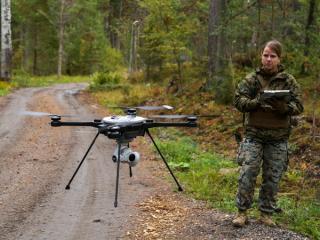
Even so, the United States and its NTIB partners continue to pursue many of the same forms of cooperation through different means. This includes a separate run at multilateral defence cooperation by the Joe Biden administration under the guise of the AUKUS partnership between Australia, the United Kingdom and the United States. While the political momentum generated by this NTIB derivative grouping — notably, with Canada omitted — has succeeded in reducing some barriers to integration, AUKUS nevertheless faces many of the same bureaucratic, political, and technical headwinds that stymied the development and implementation of the NTIB.3 This is to say nothing of the ways in which these same barriers to cooperation continue to hamper even bilateral collaboration.
Though it receives far less attention than other bilateral mechanisms or the AUKUS partnership, there remains hope that the NTIB concept may yet live out its full potential as a premier driver of alliance integration. The NTIB lingers on in low-level, periodic meetings of industrial base officials, providing a forum to discuss less sensitive industrial base issues between the closest allies, effectively the same function as the original bilateral US-Canada NTIB meetings that existed prior to the addition of Australia and the United Kingdom in 2017 (and New Zealand in 2023). In that sense, the NTIB is in a holding pattern, lacking the high-level political buy-in or bureaucratic attention required to drive progress. Yet it could still prove useful if the member countries should choose to revive it.
In that sense, the NTIB is in a holding pattern, lacking the high-level political buy-in or bureaucratic attention required to drive progress. Yet it could still prove useful if the member countries should choose to revive it.
Ironically, for both the NTIB and AUKUS, the contrarian nature of the second Donald Trump administration may offer some hope that progress on further defence industrial integration is possible. As the Pentagon and Congress pursue ambitious reforms to acquisition and contracting with the end goal of bringing in commercial companies and incentives into the defence market, the NTIB could yet be given a new life. Indeed, Silicon Valley has faced many of the same barriers to entry into the defence ecosystem encountered by US allies. Though perhaps some way off, the NTIB may stand to benefit from current efforts to come up with a deregulatory formula for the defence industrial base that can serve as a roadmap for greater integration of both the commercial and defence-specific industrial bases of the five member nations.
The origins of the NTIB
Historically, the logic of the NTIB began with a legacy industrial relationship between the United States and Canada that the two countries sought to formalise and maintain in the downsizing and deindustrialisation of the defence industrial base at the end of the Cold War. Three years after the fall of the Berlin Wall, the US Congress established the NTIB as the legal construct underpinning defence industrial base strategy-making, analysis and planning in the United States.4 As a result of those efforts, the Secretary of Defense is now required by US law to develop and maintain a defence industrial strategy for the NTIB that is integrated with the National Security Strategy required by the National Security Act of 1947, and the National Defense Strategy that implements that strategy,5 supported in the annual national defence budget as outlined in the Future Years Defense Plan.6 It is no coincidence that Congress chose to integrate and intertwine national security strategy, industrial policy and defence budgets within US statutory law.
From the beginning, Congress was very specific that the NTIB was to include more than just the US industrial base. The initial legal definition of the NTIB applied to persons and organisations engaged in research, development, production, integration, services or information technology activities not only in the United States, but in Canada as well. Canada’s inclusion in the NTIB was the product of a period of significant defence industrial drawdown and conversion in the immediate aftermath of the Cold War, but also reflected a recognition that, since the Second World War, North American defence industrial capacity was grounded in a historical cross-border integration between industrial plants and firms in the United States and Canada.7 To further solidify that relationship, a special US defence trade waiver for Canada was established in 1975 in order to streamline defence trade and production between the two countries, tracing its origins back to the US-Canada economic and defence integration imperatives captured in the 1941 Hyde Park Declaration), and reflecting how deeply intertwined the US and Canadian defence industries were.8 Thus, for the last five decades, a key industrial policy concern has been how to preserve those remaining defence industrial capabilities as a hedge against future needs as the defence supply base underwent dramatic consolidation and reduction in capacity.
While some progress was made to consolidate US-Canada defence industrial integration achieved during the Cold War between the US and Canadian defence industrial bases, countervailing forces encouraged disaggregation. The Canadian exemption to the US International Traffic in Arms (ITAR) regulations was limited and even downgraded in the early 2000s due to cases of inadvertent technology transfer to Iran.9 By the mid-2000s, the US-Canadian NTIB had effectively devolved into a forum for discussing second-order bilateral industrial base issues. Due in part to Canada’s lack of defence investment after the end of the Cold War, which compounded an underlying burden-sharing tension in the bilateral relationship since the 1980s,10 these discussions mostly addressed legacy programs and technologies — that is, long-standing and well-established defence capability initiatives — rather than new and emerging technologies or industrial trends. With time, the United Kingdom and Australia were spending more on their defence as a percentage of GDP than Canada and had begun to develop newer, more relevant defence technologies. After the invasion of Crimea and the militarisation of the South China Sea beginning in 2014, perceptions that the threat environment had changed prompted a similar shift in thinking about the rationale for the NTIB.
Expanding the NTIB: Adding Australia and the United Kingdom
A changing threat environment and technology diffusion were instrumental in driving changes to the NTIB. Three large trends underlined the renewed logic for a broader NTIB.11 The first was the return of great-power competition as the chief organising principle for US foreign policy and strategy, captured in the 2018 National Defense Strategy.12 The second was that the US military had allowed its technological dominance to atrophy as adversaries and allies began to achieve parity in defence capabilities. In both instances, threats from China and Russia were increasing and global non-defence companies had begun to compete, if not lead, in defence-relevant technology innovation more vigorously.13 The third trend was a derivative of the first two. The loss of technological dominance and the return of this more dangerous world revealed that the US export-control system was not only “inadequate with respect to the United States’ closest allies but, as a whole, detrimental to the national security of the United States.”14 The ITAR, a system designed for a bygone era of US technological dominance, disincentivises allied commercial and defence cooperation with the US Government just as this had become needed to compete against China. While it could be argued that ITAR is just one of many antiquated Cold War business processes that need to be changed, it is the most relevant one when dealing with US allies.
A decade ago, Senator John McCain, then Chairman of the Senate Armed Services Committee, concerned about these trends, turned to the NTIB as a means to counter them.15 The Senator was the driving force behind the expansion of the NTIB, sponsoring section 881 of the 2017 National Defense Authorization Act (NDAA) to include the United Kingdom and Australia in an expanded definition of the NTIB.16 Congress backed this approach with the intent and direction that the four countries embark on closer industrial and technological cooperation efforts to achieve breakthroughs in defence capabilities. Facilitating that cooperation would effectively require broad coordination and reform on a range of defence industrial security matters. It would require harmonisation of export controls, but in a way that streamlined cooperation with US allies and the commercial market while continuing to protect against potential adversaries accessing US or allied advanced technologies. Among these changes was a broadening of the Canadian ITAR exemption to apply to Australia and the United Kingdom, while commercial dual-use technology regulations would also need to change to recognise new commercial investment trends.17 The NTIB was to be the forum to bring those issues to the forefront of discussions in a focused and deliberate way.
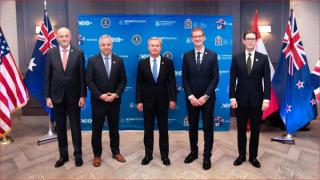
The NTIB expansion was intended to complement targeted Pentagon acquisition reforms in the 2016 and 2017 National Defense Authorization Acts, particularly with respect to barriers to accessing new sources of innovation.18 With these reforms, Congress intended to address the strategic imperative of that great-power competition by ensuring that the NTIB of the 2020s would be profoundly unlike the NTIB of the past. This would necessarily include new approaches to accessing innovation from the commercial sector and allied countries alike to meet a real and clearly defined threat, rather than focusing on maintaining and protecting an industrial capability oriented towards legacy systems as a hedge against a future, undefined threat.
Rising protectionism and the first Trump administration
An unstated but essential animating factor behind Senator John McCain’s efforts to expand the NTIB was a perceived need to protect cooperation with allies from growing protectionism and isolationism within both major parties.19 This began during the House Armed Services Committee Chairmanship of Duncan Hunter (R-CA) in the early 2000s and has steadily increased since.20 Though protectionist instincts had long been a bipartisan concern, Democrats had been able to rely on Republican free-traders in the Senate like John Warner (R-VA) and John McCain to keep such measures from ever being enacted into law. In essence, Democrats could have their cake and eat it too: populist in rhetoric, but not irresponsible in action. By the 2010s, however, Senator McCain realised that he no longer had the votes to stop protectionist legislation from passing and thus sought more comprehensive legislative solutions to guard against these instincts.
Therefore, in addition to the sound industrial base reasons for doing so, adding the United Kingdom and Australia to the NTIB also supported a longer-term legislative strategy in the Senate to offset future protectionist challenges to defence industrial integration with close allies. Even die-hard protectionists were supporters of America’s closest allies and would not oppose cooperative measures out of hand. In bill negotiations during Conference between the House and the Senate,21 Senator McCain could work with colleagues to eliminate protectionist measures from legislation, or to at least limit their application. In essence, the NTIB became an effective negotiating strategy where additional countries could be added in the future as a means to insulate them from any protectionist legislation that did become law. This strategy generally worked until Senator McCain passed away in 2018.
Coming to power in the immediate wake of the expansion of the NTIB and grappling with its own protectionist instincts, the first Trump administration didn’t quite know what to do with the framework. In practice, the NTIB contradicted core tenets of the radically different Republican approach of the Trump-led “Made in USA” strategy of Buy American, Hire American, the Jones Act, and trade and tariff actions such as on steel and aluminium based on rather flimsy national security justifications.22
NTIB implementation in the first Trump administration and the subsequent Biden administration was restricted to a small number of pilot programs focused on advancing marginal discussions on information security standards and foreign investment policy alignment.
As such, the Trump administration generally ignored the expanded NTIB and its intent, downgrading it in de facto US industrial policy with the creation of the “National Security Industrial Base” (NSIB), first cited in the implementation report for Executive Order 13806 in September 2018.23 The NSIB was defined in much the same manner as the NTIB but with an explicit limitation to entities residing only in the United States. Defence industrial base planning was thus largely guided by the NSIB concept that had no basis in US law, rather than the NTIB with its statutory legal definitions of the defence industrial base that explicitly accounted for the role of close allies. As a result, NTIB implementation in the first Trump administration and the subsequent Biden administration was restricted to a small number of pilot programs focused on advancing marginal discussions on information security standards and foreign investment policy alignment.24 While worthy objectives in their own right, further progress that would lead to the ‘seamless’ integration of the industrial bases of the five nations was not forthcoming.
AUKUS and the triumph of protectionism (Biden and Trump II)
Though the Biden administration made some effort to advance defence industrial integration with its closest allies,25 it also doubled down on protectionist and Buy America requirements in its Build America, Buy America Act (BABA), the Chips Act, and by increasing the percentage of American-made content in US government procurements from 55% in 2022 to 65% by 2024 and 75% by 2029.26 In Congress, protectionism prevailed with the passage of an amendment offered by Rep. Donald Norcross (Dem — New Jersey) to the 2024 NDAA, which enshrined the 75% requirement into law, though with language exempting allies with whom the United States had signed Reciprocal Defense Procurement Agreements (RDPAs).27 As it had during the first Trump administration, the NSIB generally remained the guiding framework for US defence industrial base planning rather than the NTIB.
Yet protectionist instincts did not entirely prevent the Biden administration from expanding multilateral defence industrial collaboration with its closest allies, albeit in other forums. Perhaps most notably, the administration turned to the AUKUS agreement with Australia and the United Kingdom to pursue policies that were broadly consistent with the objectives of the NTIB, albeit with a specific capability focus on nuclear-powered submarines.28 Whether AUKUS was created because of the perceived failure of the NTIB or driven by elements of the State Department, which may have preferred a new non-Pentagon construct to manage these same issues, is an open question. In any case, the extent to which Pillar II’s cooperative goals and objectives parallel the NTIB concept raises questions about the merits of creating a second competing forum to discuss and address barriers to technological cooperation.
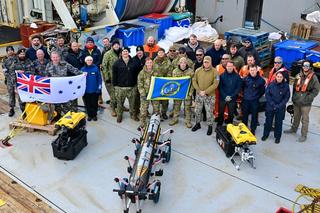
The result, however, was largely the same, as the focus on realising the promise of AUKUS seemingly undercut the NTIB as a vessel for pursuing very similar goals. For instance, AUKUS raised hopes that US export controls as they applied to Australia and the United Kingdom would finally be reformed in a manner that exceeded the limited exemptions made for Canada, which, as discussed, had already been reduced. Yet resistance among Democrats on the Senate Foreign Relations Committee and senior officials within the State Department to any broad-based exemption prevented any revolutionary change in these regulations.29 While some 70% of defence trade between the AUKUS partners became eligible for licence waivers, many of those technologies of most acute relevance to AUKUS projects across both Pillars were exempted by their inclusion on an Excluded Technologies List (ETL), greatly limiting the ability for US, UK and Australian scientists to jointly develop advanced capabilities and work on emerging technologies.30 In effect, Australia and the United Kingdom were granted the same ITAR and Export Administration Regulation (EAR) exemptions as the Canada rule — a long-standing goal under the NTIB — but without the additional carve-outs to facilitate greater collaboration on more sensitive technologies relevant to AUKUS projects.31
At the same time, the NTIB did undergo at least one understated yet significant change in the shadow of AUKUS. Specifically, the addition of New Zealand to the definition of the NTIB by Congress in the 2023 NDAA effectively transformed the NTIB into a Five Eyes arrangement.32 By doing so, Congress sought to compel the State Department to accelerate export control reform by officially conflating the NTIB with the Five Eyes intelligence sharing arrangement, a symbol of deep trust and strategic alignment — and one often referenced in AUKUS deliberations as emblematic of why Australia and the United Kingdom should be given more wide-ranging exemptions from US defence trade controls. At present, while Top Secret and higher levels of classified information can generally flow freely between Five Eyes partners, the same cannot be said for emerging technologies. Including New Zealand to the NTIB thus called attention to the distinction between the kinds of sensitive information the United States routinely shares with its closest allies and the regulatory and cultural handbrakes on technology sharing for even unclassified technologies.
It is too soon to tell how things will shake out in the second Trump administration, yet some early actions threaten to constrain defence industrial collaboration. For instance, the administration’s tariff agenda will likely raise costs on defence goods, especially those with parts manufactured in and imported from multiple countries, and may invite retaliatory measures by allies.33 For the first time, US calls for burden sharing now come with the threat of US disengagement or withdrawal from security guarantees, undercutting allied trust in the United States to remain committed to collaborative endeavours like AUKUS even if much of the foundational strategic logic remains sound. The ongoing AUKUS review and the unpredictability of current US foreign policy decision-making add uncertainty to a host of multilateral frameworks, not just the NTIB. If the Trump administration focuses purely on allies “buying stuff” from the United States rather than pursuing joint development and production initiatives, particularly for advanced or next-generation capabilities, the rationale for the NTIB will be sorely undermined.34
If the Trump administration focuses purely on allies “buying stuff” from the United States rather than pursuing joint development and production initiatives, particularly for advanced or next-generation capabilities, the rationale for the NTIB will be sorely undermined.
On the other hand, the Trump administration’s willingness to challenge bureaucracy and stated intentions to reform stale business processes at the Pentagon and Foggy Bottom could lead to progress on collaboration with allies. The Trump administration’s pro-commercial, anti-regulatory and anti-bureaucracy approach may prove helpful when it turns its attention to problems in the acquisition, contracting and technology transfer bureaucracies, particularly when emerging technology companies are complaining about the same barriers to the market that NTIB allies face.35 Though the attrition of State and Defense personnel and early executive orders to radically reform government procurement processes could all lead to short-term chaos,36 they may also create a more permissive environment for pursuing collaboration with allies as untapped sources of industrial capacity and technological innovation.
Toward a more robust NTIB
The NTIB remains a good idea, but it is up to the incumbent Trump administration to determine whether the underlying logic of industrial integration with allies and partners conforms with its worldview. The Trump administration will have to be convinced that closer defence industrial collaboration with the Five Eyes nations, beyond a simple buyer-seller dynamic, is in the US national interest. This will first require a deep recognition in Washington that the US defence industry and technology cannot alone defeat or deter China, followed by a turn to a whole-of-economy and whole-of-alliance approach to industrial base challenges. Cultural hubris — what others have referred to as a “superpower mindset”37 — currently puts the handbrake on efforts to reform US defence procurement and trade control practices to reflect that reality, but it is increasingly accepted that commercial technologies are vitally important to leverage in military applications. The fact that the Western world remains the joint repository for much of this commercial technology may yet make the NTIB a more relevant mechanism in the eyes of the current administration.
Indeed, just as the chief impediments to the NTIB have not changed, neither has its foundational rationale nor its relevance to today’s strategic circumstances. The United States must adapt to the implications of the rise of commercial technology, the growing prowess of many allies and partners and the nature of the Chinese military threat. That will necessitate dispensing with culture and management systems optimised for a period of US military technological dominance that has long since expired, and embracing the roles of non-traditional sources of military capacity and innovation. If it fails to do so, it will continue to fall behind Chinese research spending and military innovation.
Fortunately, there are many ready-made solutions for the United States and its allies to address those challenges, including through the NTIB, but reforms are required if that mechanism is to deliver on its promise.38
Recommendation 1
Establish an NTIB senior officials’ governing body to address industrial base harmonisation issues, ideally with minister-level buy-in.
Just as with the establishment of AUKUS, the NTIB would benefit from higher levels of engagement and greater institutionalisation. For the NTIB to truly work, it must have consistent buy-in from senior government leaders in all four countries, ideally at the Deputy Secretary level or above. Issues and delays with AUKUS-inspired regulatory harmonisation between Australia, the United Kingdom and the United States can be attributed in part to resistance to these changes at lower operational levels within different US government departments. Yet the profile and political clout imparted on AUKUS through regular minister and secretary-level engagements have ensured that the changes that have been agreed to have been carried through to completion. This contrasts against the shrinking of the NTIB’s mandate in the years after its expansion, with half of its pilot projects — including one on export control harmonisation — disbanded after minimal progress at the working level.39
While high-level engagement is needed to ensure follow-through, practical working groups are essential for the NTIB’s implementation. There remains a need for the NTIB to establish “a mechanism, with representation from all appropriate ministries and departments” that would assist “governments in understanding the unique interplay between different national and regulatory jurisdictions, as well as providing a forum” for engagement with industries in each country to solicit views and recommendations on advancing harmonisation in specific issue areas.40 This would be consistent with the NTIB Statement of Principles signed by Australia, Canada, the United Kingdom and the United States in 2018, intended to propel the formalisation of regular officials’ meetings “to identify barriers to collaboration and facilitate changes to agreements (as appropriate) to further integrate the nations’ industrial bases.”41

Recommendation 2
Further harmonise technology-transfer laws, regulations, policies and practices to establish an integrated defence-industrial base.
A refreshed NTIB will need to move beyond the limited Canadian — and now AUKUS — ITAR exemptions. The AUKUS ITAR waiver has made it easier to transfer legacy US components, systems and technologies not found on the so-called AUKUS Excluded Technology List, much as the Canadian ITAR exemption primarily addressed the transfer of legacy US technologies to Canada. However, neither the AUKUS nor the Canadian ITAR exemption makes it easier to jointly cooperate on new technology development without the risk of so-called ‘ITAR taint’.42 This disincentivises cooperation at the national, sectoral and entity levels.
To overcome this barrier, one solution could be to, within the NTIB nations, establish a rule that allows any unclassified defence-related good or service (to include knowledge) to move within a trusted community of entities determined by each nation, with each nation given sufficient latitude to decide whether or not that unclassified information or technology can be retransferred. If something is considered highly sensitive, then it should be classified and controlled in this manner rather than through the export control process to reflect the NTIB member countries’ shared Five Eyes status. Relatedly, the NTIB nations should also coordinate on deciding what in the unclassified realm needs controlling for the purposes of re-transfers of previously authorised goods and services. Ultimately, this should be a sovereign decision left to each nation and not precluded by US extraterritorial application of the ITAR and its stifling effects on innovation and collaboration between close allies and the commercial market.
Recommendation 3
To the maximum extent practicable, limit protectionist process barriers to cooperation by preserving agreements that protect against it.
As tariffs and Buy American procurement narrow the scope for defence industrial integration with allies, targeted exemptions from these provisions, such as those contained in current RDPAs for close allies, will likely become even more critical as a means of fostering integration, including through the NTIB. Left unaddressed, tariffs will have a negative impact on defence trade with these countries unless carve-outs similar to these agreements remain in place. In that respect, current Congressional and administration efforts to reappraise these agreements should not be allowed to suppress industrial integration in areas of critical importance to the US defence industrial base.43
Acquisition and contracting practices need to be harmonised between the five countries to a greater degree than at present and focused on rapid innovation and the incorporation of commercial technology, with the goal of standardising defence and commercial procurement procedures and requirements. The ongoing legislative debate in the United States on the unique requirements that traditional defence contractors must comply with and their stifling effect on defence innovation is illustrative of a broader problem facing the NTIB nations. Each unique contracting requirement that is imposed as a requirement to do business with the government not only adds costs to those interactions but oftentimes forecloses opportunities for innovation. The United States has tried to get around this problem by exempting non-defence commercial companies from these unique requirements, but in doing so has effectively created a two-tier acquisition process for the industrial base. Some degree of harmonisation between these tiers will be essential to discourage commercial entities from leaving or avoiding working with the Pentagon. Relatedly, similar efforts will be required in other NTIB countries to ensure that these measures are consistent across the defence industrial bases of relevant partner nations.
Recommendation 4
The NTIB should serve as a test bed for co-innovation models that could be adopted on a case-by-case basis to other close allies, and which could further civil-military integration between Silicon Valley and the Pentagon.
Of course, the NTIB alone cannot solve all the United States’ defence industrial and innovation challenges: other allies in Asia and Europe also have much to bring to the table. Yet if Washington can’t crack the code on how to cooperate with even its closest and most trusted allies, there is little hope of doing so with Japan, Korea, France, Germany or others. To ensure that the NTIB is a fitting proof of concept for broader defence industrial collaboration, its members should prioritise three main objectives. The first is to focus on immediate defence production and co-production requirements, particularly for long-range fires and drones. Creating sufficient mass across the NTIB will require that the United States share current designs and manufacturing processes and start building new overseas plants to satisfy allied demand, much as it has started to do with Australia through GWEO and with India through its recent MQ-9B agreement.44
Secondly, NTIB members should focus on jointly mobilising a secure defence supply chain that taps commercial sectors which currently sit outside what would be considered the traditional bounds of the defence industrial base. Indeed, much manufacturing capability exists within the geographical bounds of the NTIB nations that could be leveraged for defence purposes, yet parallel authorities do not exist across partner nations to mobilise these inputs should they be required. Just as in the Second World War, plans need to be made to mobilise this capability to provide for increased defence demand in case of major hostilities with Russia or China, and/or to test individual nations’ capacity to call on industrial resources under wartime conditions, including under conditions of disruption from foreign actors.
Finally, the NTIB partners should compare notes on creating a roadmap for rapidly developing new defence capabilities and technologies through a joint commercial development and acquisition model. The United States already has some authorities in place to accelerate these processes in the shape of the Other Transactions Authority (OTA) and other time-based acquisition approaches.45 However, it has yet to engage these at scale, meaning that many venture capital-backed commercial companies are encountering the well-known defence acquisition ‘Valley of Death’. This may change as the Trump administration looks to overhaul the Pentagon’s acquisition reform processes, noting the emphasis on OTAs and buying commercial products in Trump’s April 2025 Executive Order on modernising defence acquisition and innovation processes.46 Should these efforts be successful, they could serve as a model to be adopted by the other NTIB countries.
